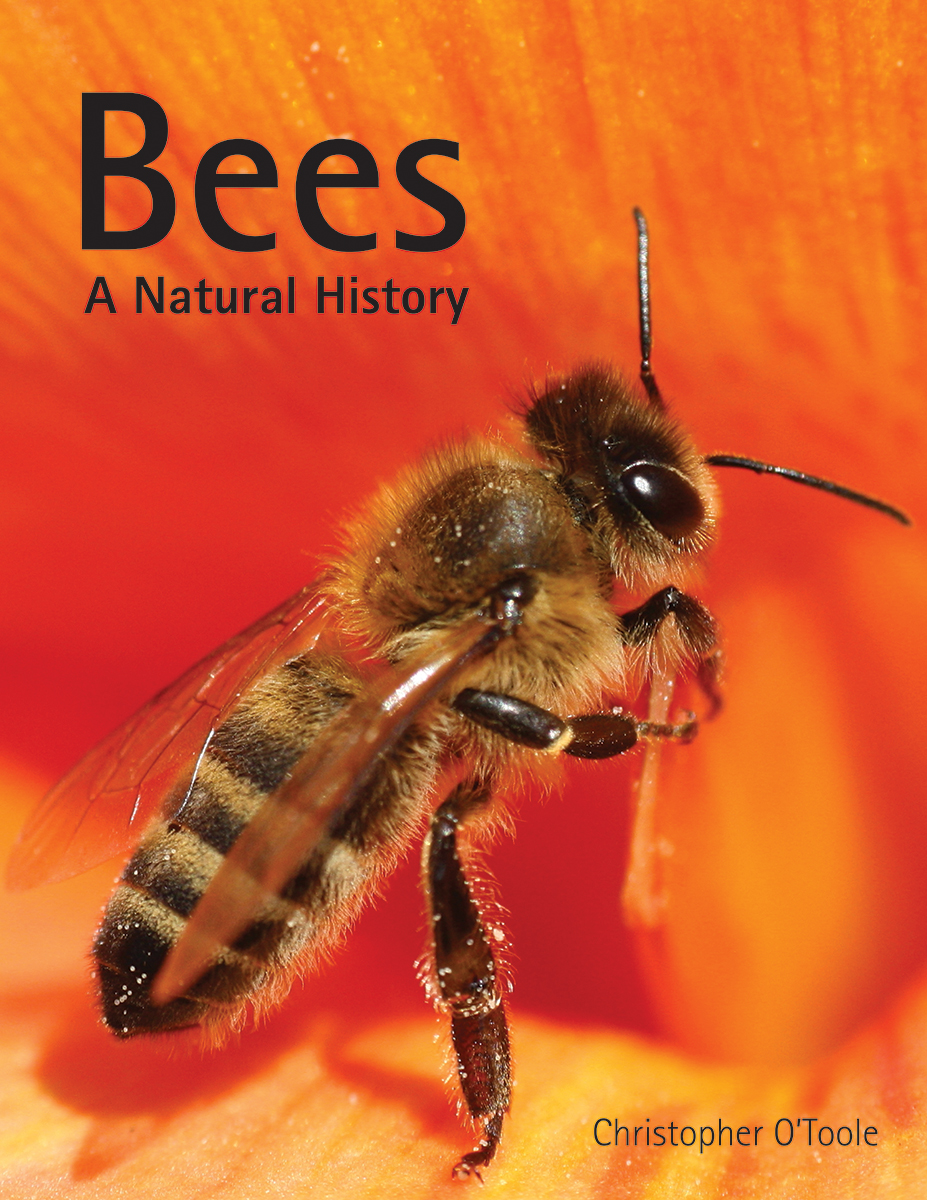Bees: A Natural History
It is now 22 years since a large and general introduction to the wonderful world of bees, came on the market (Bees of the World by O’Toole & Raw). Natural history books that are aimed at the interested general public, lavishly illustrated with spectacular photographs and still of considerable value to experienced melissophiles are as uncommon as they are welcome.
This new book, published in the US by Névraumont Publishing Company and Firefly Books, and retailing at £30 looks at all aspects of bees, and includes chapters addressing topics on “What is a Bee?”, “The Many Ways of Being a Bee”, “Bees and other Animals” – the latter section incorporating information on bees and folklore and modern medicine, conservation, and some helpful advice and encouragement on how to be a “Backyard Bee Scientist”. The easy conversational style of O’Toole’s prose shows why he is such an able communicator, and why he has been in such demand as a popular science writer. The text includes many observations that the author has made himself, and reflects his infectious enthusiasm for his subject. BWARS contribution to distribution mapping is recognised, and a full page is dedicated to a map of the distribution of Bombus hypnorum (as at the start of the 2013 season), and is used to illustrate just what is possible if the volunteer sector is mobilised effectively.
It would be very strange for such a book (240 pages) if a few typos didn’t slip in somewhere or other, and this one is no exception. Perhaps a spell checker is not the most useful of tools in the word processor’s armoury when confronted with so many scientific names. I also think that the section on specialisations in bee/plant interactions, might have benefitted from another look too. The examples cited of various specialised bees and the forage plants they exploit looks a little outdated in the light of recent research, but this really doesn’t detract from what is a marvellous book.
It is only correct to comment on the extraordinarily high quality of the photographs throughout and the great skill employed by the many photographers. As the book is so dependent on the expertise of these dedicated individuals, it does seem a bit invidious to single out Edward Ross for special mention, and not even to mention the others in the acknowledgments section at the back of the book.
This book will appeal to general naturalists and wild life photographers as well as bee specialists and all round entomologists too. It is a very worthy successor to “Bees of the World” by the same author. Its arrival on the bookshelves in time for Christmas is clearly no accident, and I am sure many people will want this colourful and informative introductory book in their Christmas stockings.
One final quibble though. The author states in his introduction that “Being social and making honey are in reality eccentric things for bees to be engaged in; the focus on social bees means that the vast majority of bees barely appear on the radar of public consciousness”. In the light of this lament, it is a huge shame, and a missed opportunity, that the powers that be have put a Honeybee on the front cover of the book. Surely something else could have been found?
Stuart Roberts
November 2013
Details:
EAN: 9781770852082 ISBN: [ 1770852085 ] £30.00


